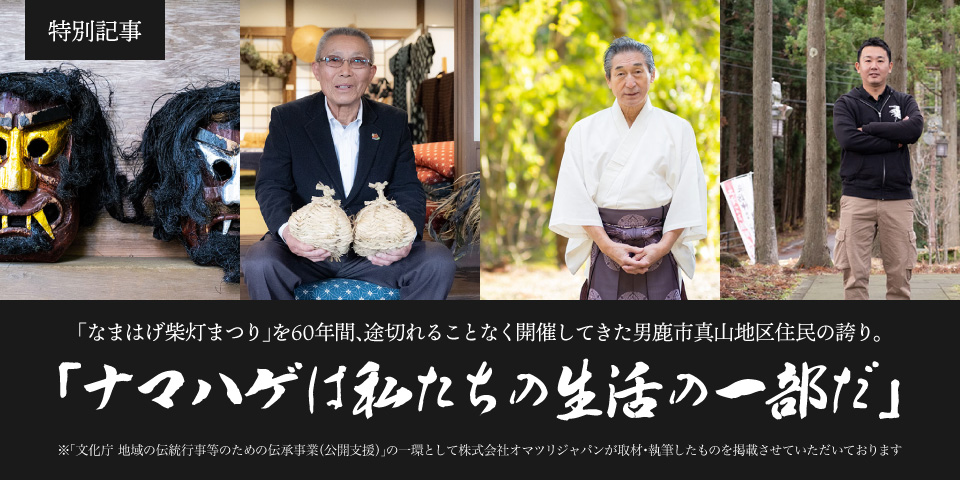- 【各日10席限定】嬉しい特典付き!特設シート&入場料セットプラン「なまはげ入魂」が行われる石段の前、一般のお客様は立ち入りできない特等席で儀式をゆっくりとお楽しみいただけます。
入場協賛券や立ち見観覧席利用券、お神酒振る舞い、特製なまはげ手袋などもセットになったお得なプランです!
詳細・ご予約はアクティビティジャパンまたはアソビューをご確認ください
※秋田冬アソビ割クーポンご利用で13(金)は50%割引!14(土)・15(日)は25%割引になります - 【各日1組様限定】柴灯まつりプレミアム行事体験!なまはげ行事体験(家族役)と入場料セットプランなまはげ柴灯まつりにて行われる「なまはげ行事再現」に出演できる特別企画!なまはげからの問答を受けるご家族を募集します!お申込は、お友達同士、グループでもOK!事前ヒアリングにてなまはげに戒めてほしい事、褒めてほしい事等をお聞きし、あなただけの特別な体験をお届けします。
詳細・ご予約はアクティビティジャパンまたはアソビューをご確認ください
※秋田冬アソビ割クーポンご利用で13(金)は50%割引!14(土)・15(日)は25%割引になります - 第63回なまはげ柴灯まつりの入場事前申込を12/1から受付開始しました入場申込はKKday(ページ最下部のリンク)からのみの受付となります。また、入場料はお申し込みの際の事前決済のみとなり、当日会場にて現金でのお支払いはお受けできませんのであらかじめご了承ください。
- ナマハゲ伝導士のみなさまへ伝導士メーリングリストでご案内のとおり、ナマハゲ伝導士認定証をお持ちの方は、例年通り無料で入場いただけます。
ご来場にあたっては事前のお申し込みが必要となります。一般の入場事前申込フォームではなく、お手数ですがお問い合わせフォーム・LINE公式アカウントまたは実行委員会事務局へお電話でご連絡をお願いいたします。
63rd Namahage Sedo Festival.
Feb. 13rd(Fri.), 14th(Sat.), 15th(Sun.), 2026
6:00 p.m. - 8:30 p.m.
Feb. 13rd(Fri.), 14th(Sat.), 15th(Sun.), 2026
6:00 p.m. - 8:30 p.m.


